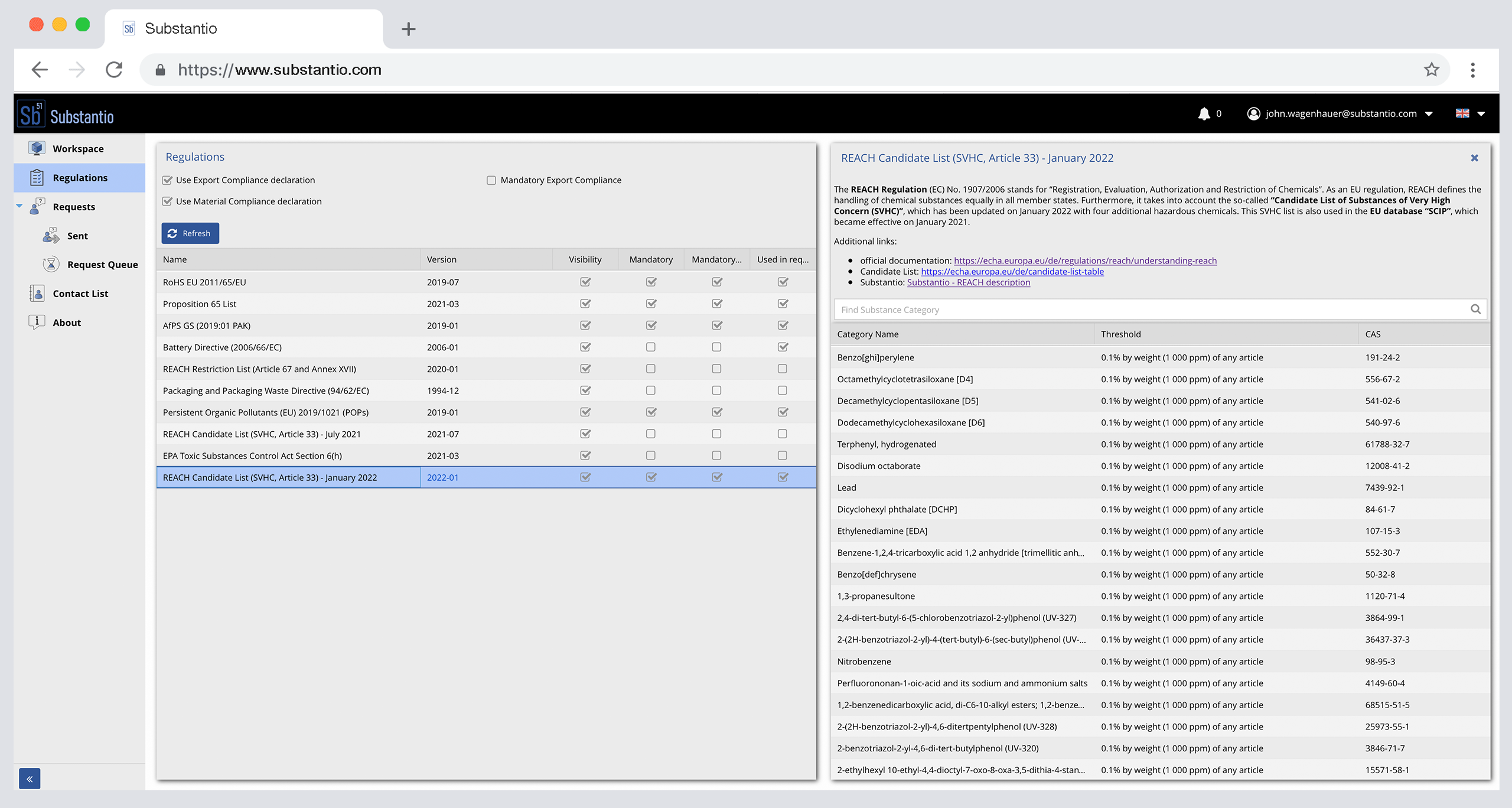REGULATIONS
Sustained and reliable communication between all parties involved in a supply chain is becoming increasingly complex and time-consuming. Compliance with all the various regulations in the area of Environmental Product Compliance (EPC) involves laws and regulations. These include environmental and company law requirements that regulate or even prohibit the use of various substances and materials in products. In addition to improved product quality and safety, this is above all an important component of sustainability.

RoHS serves as a regulation for the restriction of certain hazardous substances in various devices. The aim of this regulation is to make the recycling process of problematic components of electronic waste more transparent and thus simplify it. Comparable directives are the Korea and China RoHS, which apply in the Asian region.
The REACH Regulation (EC) No. 1907/2006 stands for “Registration, Evaluation, Authorization and Restriction of Chemicals”. As an EU regulation, REACH defines the handling of chemical substances equally in all member states. Furthermore, it takes into account the so-called “Candidate List of Substances of Very High Concern (SVHC)”, which has been updated on 08 July 2021 with eight additional hazardous chemicals. This SVHC list is also used in the EU database “SCIP”, which became effective on January 2021.
The Toxic Substances Control Act (TSCA) is a key standard of U.S. chemical regulation. The intent is to lower the chemical risk as easily as possible while still considering the benefits of the product.
The California Safe Drinking Water and Toxic Enforcement Act (Prop. 65) requires California companies selling the goods there to warn consumers about hazardous substances by means of an appropriate label. In addition, the law prohibits the introduction of significant amounts of listed chemicals into drinking water.
Persistent organic pollutants refer to chemical substances that are difficult to degrade once released and thus remain in the environment over the long term. They also offer the potential for long-range export. This creates the risk of these substances spreading worldwide through air and ocean currents.
The “Packaging and Packaging Waste Directive” stands for the handling of packaging and packaging waste. The aim is to reduce packaging waste in order to improve the environmental balance and to support the recycling process in a sustainable manner. In addition, this uniform regulation should contribute to the harmonization of the different measures in the member states. This regulation applies equally in all EU countries.
Battery Directive refers to measures regarding the entire life cycle of batteries and used batteries that are intended to benefit the environment and the internal market. A distinction is made between three different types of batteries: Portable, industrial and automotive batteries.
The GS label is awarded for compliance with the Committee for Production Safety (AfPS) tested safety specification with regard to polycyclic aromatic hydrocarbons (PAHs) in polymer samples. Compliance with the approved determination limit of PAH contamination on contact/grip and actuation surfaces is tested.
